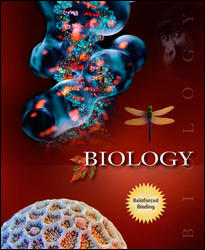 
Biology, Eighth Edition (Raven)Chapter 18:
GenomicsLearning OutcomesChapter 18
- Define genome.
- Discuss the breath of genomics.
- Distinguish between genetic maps and physical maps.
- Describe the different techniques used for sequencing a genome.
- Discuss the pros and cons of using clone-by-clone sequencing versus shotgun sequencing.
- Compare the sizes of different genomes (Drosophila, human, rice)
- Describe the ways genes are identified in the genome.
- Describe the four different classes of protein-encoding genes in eukaryotes.
- Discuss the significance of non-coding regions in the genome.
- Describe the variation in the human genome as a result in SNPs.
- Define genomics. Discuss the various fields of genomics and the importance in understanding life.
- Describe the applications of functional genomics.
- Describe the applications of proteomics.
- Discuss the impact genome projects will have on human life in the future: medical, agricultural and social.
 |  |
|





